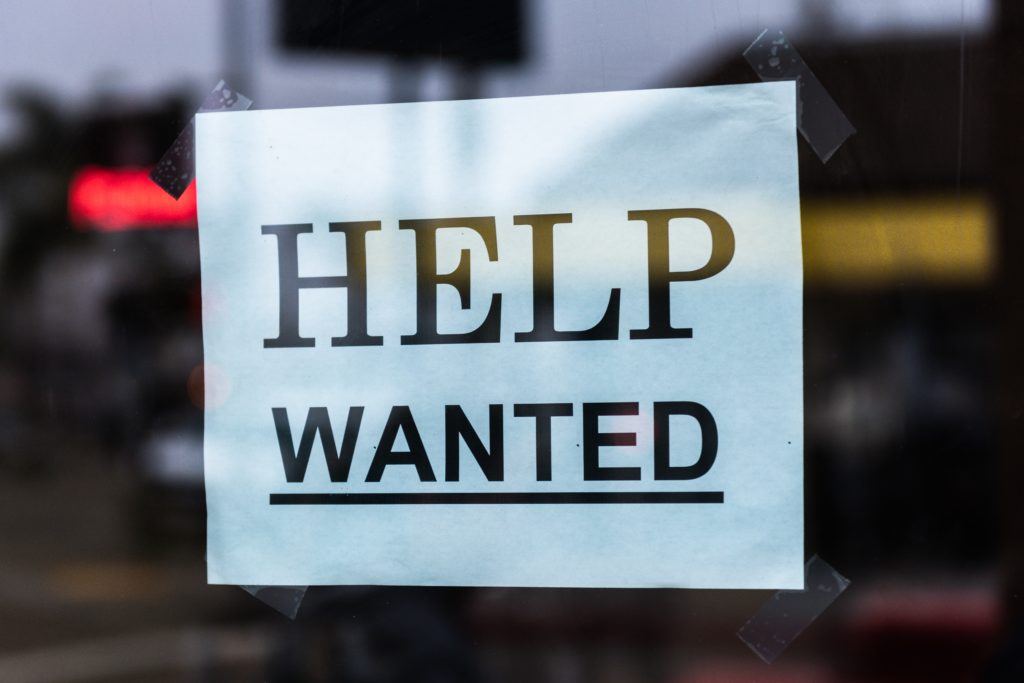As the COVID-19 pandemic recedes in Maine, business-owners have begun to raise a new economic concern as they report difficulty hiring workers to fill vacancies. These concerns are far from new, however, and employers have been worried about a shrinking labor force in Maine for at least the past decade. For example, a 2018 survey of Maine employers found that three of their five most important issues related to worker availability. The Maine Department of Labor has been warning of a shortage of workers as far back as 2010 in its official population and employment projections.
Despite this being a long-standing concern, some lawmakers are making the mistake of blaming temporary policies, such as the expansion of Unemployment Insurance benefits during the pandemic. Maine Republican leaders recently joined other members of their party nationwide who have called for cutting off these payments early in an effort to coerce people into work faster. Not only is this proposal economically damaging for those unemployed workers and their families, but it will collectively mean the loss of $22 billion for the 25 states who will be opting out of the federal programs early. What’s more, there’s no evidence that federal changes to the UI program are keeping people from work en masse. A recent study published by the Federal Reserve Bank of San Francisco finds that the higher benefits and extended eligibility period are only having a very small impact on the labor supply.
What’s really behind the labor shortage
Instead of casting misplaced blame on the UI program, lawmakers should look to the deeper roots of Maine’s labor shortage. Primary among these is the decline in the number of available workers as working-age Mainers continue to leave the state or retire at a higher rate than they move to Maine, or age into the workforce. Maine’s prime working-age population (25-64 year-olds) peaked at just under 745,000 in 2006. Since then, that number has steadily declined to just over 703,000 in 2019, according to the US Census Bureau’s American Community Survey. While some of that decline can be made up for by increased employment among Mainers after traditional retirement age, a shrinking prime-age workforce inevitably means fewer applicants for potential employers to choose from.
Maine’s tourism sector – which has been most vocal about the recent hiring challenges – is especially vulnerable to this demographic squeeze. Tourism businesses rely heavily on students seeking summer employment and entry-level workers who tend to be younger. In 2019, more than half of all restaurant and bar workers in Maine were under the age of 30, as were just under half of all arts and entertainment workers, and one third of workers at hotels and motels – a pool of workers which is getting smaller each year.
Other factors are contributing
Beyond the demographic shift, there are other factors reducing the availability of workers, some of which have been exacerbated by the COVID-19 pandemic.
Childcare was prohibitively expensive for many families even before the pandemic, and one in five Mainers lived in a “child care desert” – an area in which the number of young children exceeds the number of child care slots by more than three times. On top of that, around 100 child care facilities closed during the COVID-19 pandemic, and the rest operated with reduced capacity. According to the Census Bureau’s Household Pulse survey in late May, thousands of Maine parents were either out of work or working reduced hours because their child’s daycare or school was closed due to COVID-19.
Access to health care also plays a pivotal role in Mainers’ ability to work. As I wrote in the State of Working Maine 2017 report, chronic health problems pose a barrier for many Mainers who would otherwise be looking for work.
Lawmakers should stay the course
Maine’s economy is clearly recovering from the economic recession brought about by the COVID-19 pandemic. Businesses are reopening to full capacity, and hiring has picked up. But many of the same problems which hindered the growth of Maine’s workforce in 2019 are still present today, and in some cases are worsened along preexisting trends. The solution to employer concerns about a worker shortage is not to cut support for jobseekers, but rather the opposite – to provide the assistance with barriers such as childcare and health care – and, over the longer term, to make Maine a welcoming place for young workers and their families. Lawmakers must remain committed to efforts to strengthen investments in Maine people which will grow our economy.




